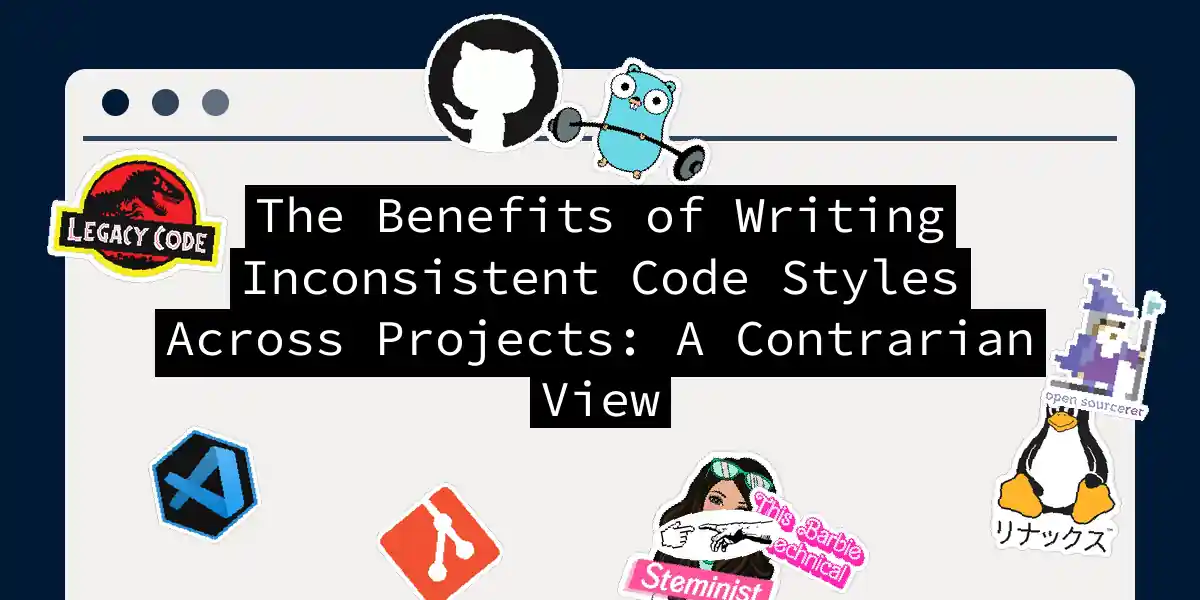The Chaos Theory of Coding: Embracing Inconsistency
In the world of software development, the mantra of code consistency is often preached as the holy grail of collaborative coding. However, what if I told you that sometimes, just sometimes, a bit of chaos can be beneficial? Let’s dive into the uncharted territory of writing inconsistent code styles across projects and explore the potential benefits, or at the very least, the interesting discussions it can spark.
The Case for Consistency
Before we dive into the contrarian view, it’s essential to acknowledge the well-documented benefits of code consistency. Consistent code simplifies collaboration, enhances maintainability, reduces errors, and improves overall code quality[1][2][3].
The Human Factor: Creativity and Personal Touch
One of the primary reasons developers might resist a strict coding standard is the loss of personal touch. Coding is an art form, and just as artists have their unique styles, developers do too. Inconsistent code styles can reflect the diversity and creativity of the team. Imagine a codebase where each section is a fingerprint of the developer who wrote it – it’s like a digital art gallery.
Innovation Through Divergence
Consistency can sometimes stifle innovation. When everyone follows the same rules, there’s less room for experimentation. Inconsistent code styles can lead to different approaches to solving the same problem, which might uncover new and better methods. It’s akin to the concept of “multiple discovery” in science, where different researchers independently arrive at the same breakthrough.
Real-World Scenarios: Legacy Code and Rapid Prototyping
Legacy Code
Working with legacy code often means dealing with a patchwork of different coding styles accumulated over years. Instead of trying to refactor everything to a new standard, embracing the inconsistency can be more practical. It allows developers to focus on the critical areas that need immediate attention rather than getting bogged down in a massive refactoring effort[4].
Rapid Prototyping
In the fast-paced world of startups or proof-of-concept projects, speed is often more crucial than consistency. Allowing developers to use their preferred coding styles can accelerate the development process. The goal here is to get something working quickly, and consistency can be addressed later when the project stabilizes.
Tools and Processes: Managing Chaos
While inconsistent code styles might seem chaotic, there are tools and processes that can help manage this chaos.
Automated Tools
Tools like linters and code formatters can enforce certain aspects of coding standards without dictating every detail. For example, you can use PHPCodeSniffer to check for syntax errors and coding style violations while still allowing some flexibility in naming conventions and indentation[2].
Code Reviews
Code reviews are essential in any development process. Instead of focusing solely on consistency, reviews can also encourage innovation and creativity. Reviewers can provide feedback on both the adherence to standards and the ingenuity of the solution.
The Balance Between Chaos and Order
It’s not about completely abandoning coding standards but finding a balance. Here’s a possible approach:
- Core Standards: Establish core standards that are non-negotiable, such as security practices and critical naming conventions.
- Flexible Guidelines: Allow for flexibility in other areas, such as indentation styles or comment formats.
- Documentation: Keep detailed documentation of the coding standards and the rationale behind them. This helps new developers understand the context and make informed decisions.
Conclusion: Embracing the Chaos
In conclusion, while code consistency is undoubtedly important, there are scenarios where embracing inconsistency can be beneficial. It allows for creativity, innovation, and a more personalized approach to coding. By using the right tools and processes, you can manage the chaos and still maintain a high level of quality and maintainability.
So, the next time you’re tempted to enforce a strict coding standard, remember that a little bit of chaos can be a good thing. After all, as the saying goes, “well-behaved code seldom makes history.”
